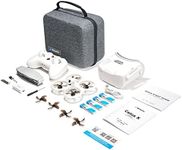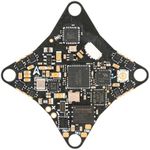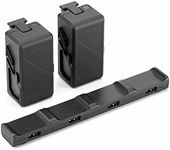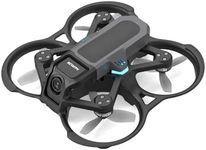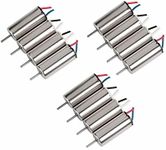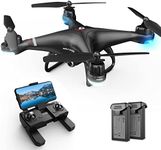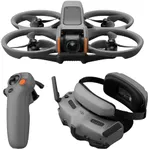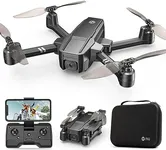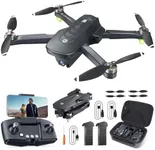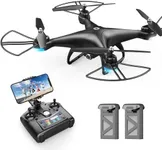Buying Guide for the Best Fpv Starter Kit
Choosing the right FPV (First Person View) starter kit can be an exciting yet daunting task, especially if you're new to the world of FPV drones. The key to making the right choice is understanding the various components and specifications that make up an FPV kit. This will help you match the kit to your needs and preferences. Here are some important specs to consider and how to navigate them.Drone TypeThe type of drone in your FPV kit is crucial as it determines the drone's capabilities and your flying experience. Common types include micro drones, racing drones, and freestyle drones. Micro drones are small and great for indoor flying, making them ideal for beginners. Racing drones are built for speed and agility, perfect for competitive flying. Freestyle drones offer a balance of speed and maneuverability, suitable for performing tricks and stunts. Choose a drone type based on where you plan to fly and what you want to achieve with your FPV experience.
Camera QualityThe camera quality in an FPV kit affects the clarity and detail of the video feed you receive. This is important for both enjoyment and performance. Cameras are typically rated by resolution (e.g., 720p, 1080p) and frame rate (e.g., 30fps, 60fps). Higher resolution and frame rates provide clearer and smoother video, which is beneficial for precise flying and racing. Beginners might start with a lower resolution to keep costs down, while more serious pilots will benefit from higher quality cameras.
GogglesFPV goggles are your window into the drone's perspective, so their quality and comfort are vital. Goggles vary in resolution, field of view (FOV), and fit. Higher resolution and wider FOV provide a more immersive experience. Comfort is also key, as you'll be wearing them for extended periods. Try to find goggles that fit well and have adjustable straps. Beginners might opt for simpler, more affordable goggles, while advanced users may prefer high-end models with better specs.
Transmitter (Controller)The transmitter is your primary tool for controlling the drone. It should be comfortable to hold and have a layout that you find intuitive. Transmitters vary in the number of channels they offer, with more channels providing greater control over the drone's functions. Beginners should look for a transmitter that is easy to use and not overly complex, while more experienced pilots might prefer one with additional features and customization options.
Battery LifeBattery life determines how long you can fly before needing to recharge. This is measured in milliampere-hours (mAh). Longer battery life means more flying time, which is especially important for beginners who need more practice. However, longer battery life often comes with added weight, which can affect the drone's performance. Look for a balance between flight time and weight that suits your flying style. Having extra batteries on hand can also extend your flying sessions.
DurabilityDurability is crucial, especially for beginners who are likely to crash more often. Drones made from materials like carbon fiber or reinforced plastic tend to be more durable and can withstand crashes better. Check for features like propeller guards and sturdy frames. If you're just starting, prioritize a drone that can take a beating and keep flying. As you gain experience, you might opt for lighter, less durable models that offer better performance.
Ease of SetupFor beginners, an FPV kit that is easy to set up can make the learning process much smoother. Kits that come pre-assembled or with clear instructions are ideal. Look for kits that include all necessary components and tools, so you don't have to purchase additional items separately. As you become more experienced, you might enjoy the challenge of building and customizing your own drone, but starting with a simple setup can help you get flying quickly and with less frustration.
